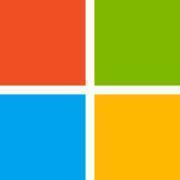Data Integration Tools
Data Integration Tools Overview
Top Rated Data Integration Products
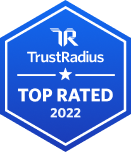
These products won a Top Rated award for having excellent customer satisfaction ratings. The list is based purely on reviews; there is no paid placement, and analyst opinions do not influence the rankings. Read more about the Top Rated criteria.
Data Integration Tools TrustMap
TrustMaps are two-dimensional charts that compare products based on trScore and research frequency by prospective buyers. Products must have 10 or more ratings to appear on this TrustMap.
Data Integration Products
(1-25 of 142) Sorted by Most Reviews
The list of products below is based purely on reviews (sorted from most to least). There is no paid placement and analyst opinions do not influence their rankings. Here is our Promise to Buyers to ensure information on our site is reliable, useful, and worthy of your trust.

TIBCO Cloud™ Integration is an enterprise iPaaS platform. It offers a drag-and-drop and API- led design approach for user-friendliness.
Key Features
- Pre-built connectors (108)82%8.2
- Support for real-time and batch integration (105)80%8.0
- Monitoring console (108)72%7.2
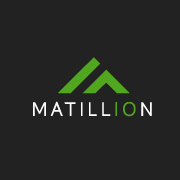
Matillion
Matillion is data transformation for cloud data warehouses. According to the vendor, only Matillion is purpose-built for Amazon Redshift, Snowflake, and Google BigQuery enabling businesses to achieve new levels of simplicity, speed, scale, and savings. Users can develop custom…
Key Features
- Connect to traditional data sources (90)93%9.3
- Simple transformations (91)90%9.0
- Complex transformations (90)80%8.0

Oracle GoldenGate
Oracle GoldenGate is database management software for data integration, and availability support for heterogeneous databases.
Key Features
- Simple transformations (37)93%9.3
- Connect to traditional data sources (42)92%9.2
- Complex transformations (33)69%6.9

SolarWinds Task Factory
According to the vendor, SolarWinds Task Factory saves time managing tedious ELT/ETL tasks with high-performing SQL Server Integration Services (SSIS) components that can be used within the Visual Studio environment to connect to nearly any data source. Task Factory’s components…
Key Features
- Complex transformations (36)93%9.3
- Connect to traditional data sources (41)90%9.0
- Simple transformations (40)85%8.5
Key Features
- Simple transformations (40)92%9.2
- Connect to traditional data sources (40)86%8.6
- Complex transformations (39)76%7.6

Boomi
Boomi is a cloud-based, on-premise, or hybrid integration platform. It offers a low-code/no-code interface with the capacity for API and EDI connections for integrating with external organizations and systems, as well as compliance with data protection regulations.
Key Features
- Support for real-time and batch integration (28)88%8.8
- Pre-built connectors (28)87%8.7
- Monitoring console (29)83%8.3
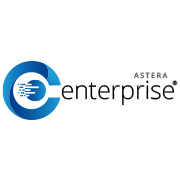
Astera Centerprise
Centerprise Data Integrator is an integration platform that includes tools for data integration, data transformation, data quality, and data profiling.
Key Features
- Simple transformations (25)86%8.6
- Connect to traditional data sources (25)86%8.6
- Complex transformations (23)79%7.9

TIBCO Data Virtualization
TIBCO Data Virtualization is an enterprise data virtualization solution that orchestrates access to multiple and varied data sources and delivers the datasets and IT-curated data services foundation for nearly any solution.

Pentaho
Pentaho is a suite of open source business intelligence and analytics products, now offered and supported by Hitachi Data Systems since the June 2015 acquisition.
Key Features
- Multi-User Support (named login) (19)82%8.2
- Formatting capabilities (18)77%7.7
- Publish to PDF (18)69%6.9

SAP Data Intelligence
SAP Data Intelligence is presented by the vendor as a single solution to innovate with data. It provides data-driven innovation in the cloud, on premise, and through BYOL deployments. It is described by the vendor as the new evolution of the company's data orchestration and management…

Qlik Replicate
Qlik Replicate enables organizations to accelerate data real-time replication, ingestion and streaming via change data capture, across a wide range of heterogeneous databases, data warehouses and data lake platforms.

Oracle Data Integrator
Oracle Data Integrator is an ELT data integrator designed with interoperability other Oracle programs. The program focuses on a high-performance capacity to support Big Data use within Oracle.
Key Features
- Monitoring console (13)81%8.1
- Pre-built connectors (12)76%7.6
- Support for real-time and batch integration (13)74%7.4
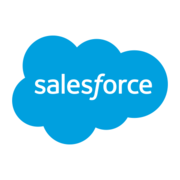
Dataloader.io
Dataloader.io delivers a cloud based solution to import and export information from Salesforce.

SnapLogic
SnapLogic is a cloud integration platform with a self-service capacity supported by over 450 prebuilt modifiable connectors. SnapLogic also offers real-time and batch integration processes for interfacing with external data sources, a drag-and-drop interface, and use of the vendors’…
Key Features
- Pre-built connectors (22)83%8.3
- Monitoring console (24)80%8.0
- Support for real-time and batch integration (24)80%8.0
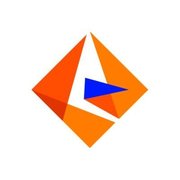
Informatica PowerCenter
Informatica PowerCenter is a metadata driven data integration technology designed to form the foundation for data integration initiatives, including analytics and data warehousing, application migration, or consolidation and data governance.
Key Features
- Simple transformations (18)92%9.2
- Connect to traditional data sources (18)90%9.0
- Complex transformations (18)78%7.8
Key Features
- Complex transformations (10)79%7.9
- Connect to traditional data sources (10)70%7.0
- Simple transformations (10)60%6.0

Clear Analytics is a business intelligence solution that enables non technical end users to perform analytics by leveraging existing knowledge of Excel coupled with a built in query builder. Some key features include: Dynamic Data Refresh, Data Share and In-Excel Collaboration.
Key Features
- Customizable dashboards (10)90%9.0
- Pixel Perfect reports (10)88%8.8
- Report Formatting Templates (10)88%8.8

Toad Data Point
Toad Data Point is a cross-platform, self-service, data-integration tool that simplifies data access, preparation and provisioning. It provides data connectivity and desktop data integration, and with the Workbook interface for business users, it provides simple-to-use visual query…

Talend Data Integration
The Talend Integration Suite, from Talend, is a set of tools for data integration.
Key Features
- Connect to traditional data sources (9)90%9.0
- Simple transformations (9)90%9.0
- Complex transformations (9)90%9.0

COZYROC
COZYROC SSIS+ is a suite of 240+ advanced components for developing ETL solutions with Microsoft SQL Server Integration Services. The vendor states that COZYROC is an easy-to-use, code-free library of tasks, components and reusable scripts that can significantly cut development time…
Key Features
- Simple transformations (7)77%7.7
- Connect to traditional data sources (7)77%7.7
- Complex transformations (5)68%6.8

Fivetran
Fivetran replicates applications, databases, events and files into a high-performance data warehouse, after a five minute setup. The vendor says their standardized cloud pipelines are fully managed and zero-maintenance. The vendor says Fivetran began with a realization: For modern…
Key Features
- Connect to traditional data sources (7)87%8.7
- Simple transformations (6)80%8.0
- Data model creation (6)76%7.6
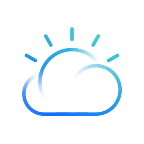
InfoSphere
IBM InfoSphere is an enterprise grade master data management solution used by over 700 customers. It competes with Oracle's Siebel UCM product and Informatica.
Key Features
- Connect to traditional data sources (5)100%10.0
- Simple transformations (5)100%10.0
- Connecto to Big Data and NoSQL (5)100%10.0

Oracle Warehouse Builder
Oracle Warehouse Builder is a data integration solution, from Oracle.
Key Features
- Connect to traditional data sources (5)100%10.0
- Simple transformations (5)100%10.0
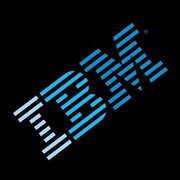
IBM InfoSphere DataStage
IBM InfoSphere DataStage is an ETL platform for integrating data across enterprise systems, available on-premise or on cloud.
Key Features
- Simple transformations (5)98%9.8
- Connect to traditional data sources (5)98%9.8
- Complex transformations (5)88%8.8
Learn More About Data Integration Tools
What are Data Integration Tools?
The need for data integration emerges from complex data center environments where multiple different systems are creating large volumes of data. This data must be understood in aggregate, rather than in isolation. Data integration is nothing more than a technique and technology for providing a unified and consistent view of enterprise-wide data.
Data Integration Tools Features & Capabilities
Ability to process data from a wide variety of sources such as mainframes, enterprise applications, spreadsheets, proprietary databases, etc.
Ability to process unstructured data from social media, email, web pages, etc.
Syntactic and semantic checks to make sure data conforms to business rules and policies
Deduplication and removal of incorrectly or improperly formatted data
Support for metadata
Types of Data Integration
There are several different approaches to achieving this goal which are quite different to each other and essentially solve slightly different problems: The main technologies for data integration are Extract, Transform Load (ETL), Enterprise Application Integration (EAI), and Enterprise Information Integration (EII), or data virtualization as it is more often called today.
Products listed in this category belong to the ETL data integration approach. Unlike the other listed approaches, ETL is designed for data migration and integration of large volumes of data to provide a basis for decision-making.
What is ETL?
ETL is a process whereby large volumes of required data are extracted from various databases and converted into a common format. The data is then cleaned, and loaded into the specialized reporting database called a data warehouse. It is then available for standard reporting purposes.
The data used in ETL can come from any source including flat files, Excel data, application data like CRM or ERP data, or mainframe application data. Perhaps the most difficult part of the process is the “Transform” component. Here, not only must the data be cleansed and any duplicates removed, but the software also has to resolve data consistency issues. It applies rules to consistently convert data to the appropriate form for the data warehouse or repository.
Once the data has been loaded into a data warehouse it is available for querying by business intelligence front-end processes that can pull consolidated data into reports and dashboards.
Shortcomings of Data Warehouses
One shortcoming of the data warehouse approach is that the data is not always current. Data warehouses pull data from databases periodically in batches, not in real time. If the data in the source database has changed, this might not be reflected in the data in the warehouse. Various strategies can be employed to achieve “real-time ETL”, although some of them place a significant load on the database. This can have performance repercussions.
The simplest thing to do is simply increase the frequency of batch updates to near real-time processing. But there are other solutions including continuously feeding the database using real-time data transport technologies, the use of staging tables, or a real-time data cache.
Pricing Information
Enterprise-level data integration tools can be very expensive with some products costing upwards of $10,000 per user per year. On top of that, you may need to pay for professional services to get up and running. SMB solutions are significantly cheaper than this.
Related Categories
Frequently Asked Questions
What are the best Data Integration Tools?
The top rated data integration tools are as follows:
